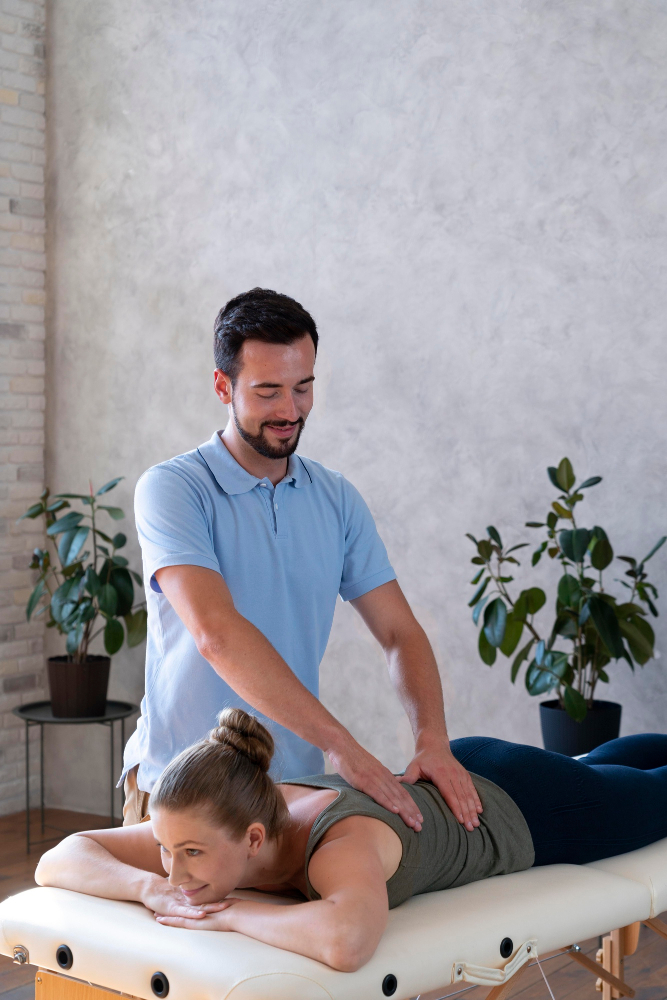In the competitive world of sports and fitness, every detail counts—from nutrition and training schedules to sleep cycles and recovery strategies. While most athletes dedicate time to honing their skills and building strength, many overlook one of the most effective tools for performance and recovery: professional sport massage. More than just a way to relax, this targeted therapy has been proven to enhance performance, speed up recovery, and help prevent injuries.
Whether you're a weekend runner or a professional competitor, integrating professional sport massage into your fitness regimen could be the key to staying strong, agile, and injury-free.
What is a Professional Sport Massage?
A professional sport massage is a specialized form of therapy designed for people who are physically active. Unlike a typical relaxation massage, this technique involves deep-tissue work that targets the muscles most affected by athletic activity. The goal is to address muscle soreness, improve circulation, restore mobility, and enhance overall performance.
This type of massage often combines techniques such as stretching, compression, trigger point therapy, and deep tissue manipulation to meet the unique needs of an athlete’s body.
Supports Muscle Recovery
During physical activity, muscles undergo microscopic tears, leading to inflammation and soreness. Professional sport massage helps accelerate the body’s natural recovery process by increasing blood flow to the muscles, which delivers oxygen and nutrients while flushing out toxins like lactic acid. As a result, you recover faster, feel less sore, and are ready to train again sooner.
The improved circulation also helps reduce swelling and inflammation, which is particularly beneficial after intense workouts, competitions, or long training days.
Prevents Sports-Related Injuries
One of the most significant benefits of regular sport massage is injury prevention. Athletes are often prone to overuse injuries due to repetitive movements, muscle imbalances, or limited flexibility. Massage therapy addresses these problems early by releasing tension, improving joint range of motion, and maintaining healthy muscle tissue.
It also helps therapists and athletes identify potential trouble spots before they become serious issues. Catching tight hamstrings or shoulder impingement early, for example, can prevent painful and lengthy recovery periods later.
Enhances Athletic Performance
Performance is about more than just strength or speed—it’s also about how efficiently your body moves and functions. A professional sport massage helps restore flexibility, loosen tight areas, and improve posture. This means smoother, more efficient movement during your activity of choice.
By keeping the muscles balanced and flexible, athletes often find they can train harder and perform better with reduced risk of setbacks. The increased range of motion can help improve stride length for runners, swing strength for tennis players, and form for weightlifters.
Reduces Physical and Mental Fatigue
Athletes put their bodies under a lot of pressure, but mental fatigue can be just as damaging. Sport massage not only alleviates physical tension, it also calms the nervous system and promotes relaxation. A decrease in stress hormones like cortisol, and an increase in mood-boosting endorphins, helps restore mental clarity and emotional well-being.
This mental reset is critical for athletes who need focus, motivation, and discipline. When your mind is relaxed and your body is refreshed, you’re more likely to stay consistent and perform at your best.
Supports Long-Term Athletic Health
Longevity in sports depends on how well you take care of your body. Regular sport massage helps maintain muscle quality, joint health, and mobility—key elements in sustaining athletic performance over the years. It’s not just about recovering from your last workout; it’s about preparing for the next one and building a resilient, injury-resistant body.
For athletes who are serious about their sport, professional massage is no longer a luxury—it's a form of maintenance that helps them stay in the game longer and healthier.
Tailored to Individual Needs
One of the most powerful aspects of a professional sport massage is its ability to be fully customized. Every athlete has different goals, routines, and physical challenges. A trained therapist assesses your unique needs—whether you’re recovering from a recent race, managing chronic tightness, or prepping for a competition—and tailors the session accordingly.
This targeted approach ensures that the massage delivers maximum results in minimum time, making it one of the most efficient ways to support your fitness and recovery.
When Should You Get a Sports Massage?
- There are generally four types of sports massage depending on your schedule and goals:
- Pre-event massage: Done before competition to warm up muscles and increase blood flow.
- Post-event massage: Helps flush out toxins, reduce soreness, and accelerate recovery.
- Maintenance massage: Performed regularly to keep muscles in optimal condition.
- Rehabilitation massage: Used to treat specific injuries or muscular dysfunctions.
The frequency depends on your training intensity and personal goals, but even one session per week can have a substantial impact.
Final Thoughts
For athletes who demand more from their bodies, recovery must be just as intentional as training. Professional sport massage is a proven method to support recovery, boost performance, and maintain overall physical health. It bridges the gap between rest and readiness—keeping you at your best, both mentally and physically.
Whether you’re training for your next personal best or simply trying to stay active and injury-free, incorporating massage into your fitness strategy is a smart move. In the long run, it's not just about training harder—it's about training smarter. And professional sport massage is a powerful way to do just that.





Comments